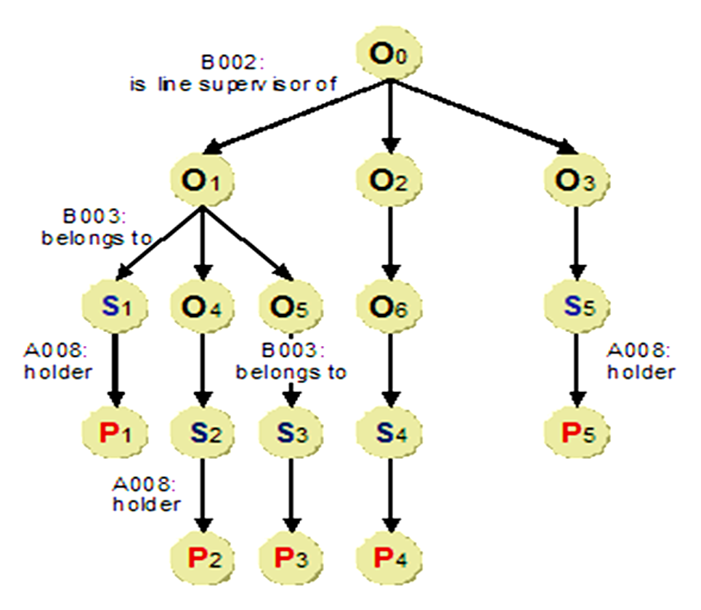Structural authorization profiles use various components – Organizational Management, Personnel Development and Training and Event Management to build hierarchies using different types of objects (object types) and different types of relationships. Central elements of this data model used to manage the authorizations for this model effectively are : objects, relationships and evaluation paths. An evaluation path describes a relationship chain that exists in a hierarchical structure between the objects.
Creation and maintenance of evaluation paths are done via transaction code OOAW. The path evaluates all objects in the hierarchical structure and tcode PPST can be used to view the hierarchical report showing all the evaluated objects. The evaluation path O-S-P, for example, describes the relationship chain : organizational unit (O) – position (S) – person (P) Organizational structure objects:
- Organizational Unit (O)
- Position (S)
- Persons (P)
Mapping an Organizational Structure:

A : Bottom up B : Top Down The convention A = bottom up and B = top down can be taken into account when a relationship between various objects is defined. However, this convention is not a mandatory rule. A combination of start object and evaluation path returns a specific number of objects from an existing hierarchical org structure. This exact combination, or the objects returned by this combination, represents a user’s structural profile. As we know that organizational structure in an organization may change based on the requirements. Hence, the specific objects and the number of objects which are returned by a structural profile also changes as the organizational structure (under the start object) changes.